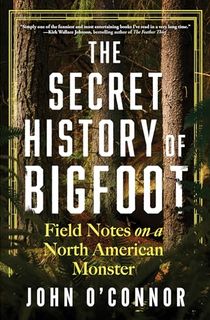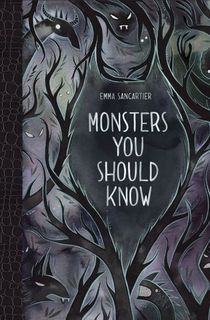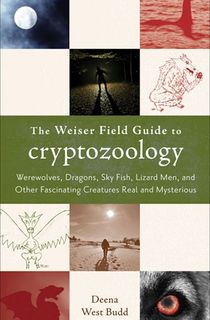Some people dedicate their weekends to tramping around in the woods looking for Bigfoot, while others stalk the internet debunking his sightings. While he may be the most famous of his kind, many people don't know to label him as a cryptid. In fact, many people don't even know what a cryptid is.
So what is a cryptid? What kinds are there? Where do they live? Come along as we answer all your burning questions. And we may just make a believer of you yet.
What is a Cryptid?
The official field of study related to cryptids is called cryptozoology. This pseudoscience has no place under the umbrellas of zoology or folklore. Essentially, cryptozoology is the purgatory of facts.
Cryptids are creatures that can neither be proven to exist nor proven not to exist. These creatures are deeply rooted in cultural tales, and even exist in the realm of urban legend. There's a whole subculture of people dedicated to finding proof of their existence. Some people claim to have seen these mysterious beasts. Others laugh at those who believe.
It may seem easy to dismiss cryptids as nothing but a tall tale, but did you know there are several accepted animal species that were once thought to be cryptids? Described as an amalgamation of different animals by Amerigo Vespucci in 1499, Kangaroos were considered a myth until 1770. Komodo dragons were believed to be nothing more than a legend until 1910.
Interested in some more recent discoveries? Because of its ties to the mythology of Western Papua New Guinea, the bondegezou was trapped in its cryptid status until 1980. And though people still argue its existence is a hoax, in 2006, an actual living giant squid was caught by scientists from Japan’s National Science Museum.
There's so much of our world we are finding out about every day. It's enough to make you believe in anything…
North American Cryptids

The Jersey Devil
Photo Credit: AlchetronThere are a ton of cryptids inhabiting North America, from the wildly popular to the obscure. West Virginia is famous for its Mothman, the giant winged creature that seems to loom over sites of tragedy. Bigfoot—also known as Sasquatch—takes up residence in the Pacific Northwest, but he also has a southern cousin in Florida called the Skunk Ape.
If you're brave enough to venture into the South Jersey Pine Barrens, you may have an encounter with the Jersey Devil. Ohio is home to the Loveland Frog, a four-foot humanoid amphibian.
Outside of the United States, Mexico has the goat-eating Chupacabras, Cave Cows resembling enormous sloths, and the aquatic dog known as the Ahuízotl.
Canada is home to the lake monster Ogopogo, the shape-shifting terrors known as the Loup Garou, and the cannibalistic Wendigo.
South American Cryptids
Chile houses two very interesting cryptids. The first is the Alicanto, a metallic, glowing bird who lives in mines and eats gold and silver. The other is Giglioli's Whale, a creature that was allegedly first sighted in 1867 and is described as having two dorsal fins.
Brazil might terrify you with its reports of the Minhocão, a giant horned earthworm that is now thought to be extinct. You may still find the Mapinguari puttering around, though—a stinky long-haired animal with a mouth in its abdomen.
Find the elephantine Pinchaque in the Colombian Andes and the red-haired, predatory ground sloth known as the Xolchixe in the Amazon Rainforest.
European Cryptids

The Loch Ness Monster
Photo Credit: AlchetronIs there any cryptid more famous than Scotland's Loch Ness Monster? Russia has a similar creature known as the Lake Ladoga Monster. In fact, there are a lot of lake monsters in Europe, including Turkey's Lake Van Monster, Ireland's Lough Foyle Monster, Serbia's Monster of Bor Lake, and France's Monster of Lake Fagua.
From its lake monsters alone, you can imagine there are innumerable cryptids across this continent. You may find something familiar in Russia's ape-like Afonya. The alpine forest of Bavaria-Germany is the home of the Wolpertinger, a small mammal with antlers, wings, and fangs. England's black dog of dark omens, the Barghest, is an eerie favorite.
These are just the highlights, and every country has a unique, cryptid-heavy culture worth exploring!
Asian Cryptids
The most famous cryptid across the continent of Asia may be the Kappa. This water-dweller is native to Japan, and is described as having unusually long arms, scaly green skin, and a humanoid shape. They're said to lure people into bodies of water to drown them before feasting on their flesh and livers. They do prefer cucumbers, though, so carving your name and birthday into one and leaving it as an offering will keep you safe.
Japan is known for several other notable cryptids, such as the notorious Tsuchinoko, a grinning, poison-spitting snake that smells like flowers. There's also the Higabon, this region's version of Bigfoot, and Issie, their Nessie equivalent.
Speaking of lake monsters, the Lake Tianchi Monster lives in Heaven Lake, sitting atop the border of China and North Korea. China also has the Yeren, the six-foot-tall wildman covered in reddish-brown hair.
Find the vicious flying monkey bat Orang-bati in Indonesia and the red-eyed black monkey called the Kala Bandar which terrorizes the people of India.
Australian Cryptids

Yowie
Photo Credit: AlchetronAustralia is home to some of my favorite cryptids! There are a variety of regional variations on the Bunyip, but the overlap on this nocturnal, water-dwelling creature describes it as having tusks, flippers, and a horse-like tail. You'll also hear about sightings of the Drop Bear all over the continent. This predatory koala-like creature is largely regarded as a joke, but some take the warnings very seriously.
In Victoria you'll find the Otways Panther, a big black cat living in the bush. Go to New South Wales to spot the Hawkesbury River Monster and the Yowie, the Australian Bigfoot, which you might also find in Queensland.
Travel to the Outback and you might see the Yara-ma-yha-who, artfully described as a small vampire goblin monkey with no teeth that uses suckers on its hands to devour human flesh. You may also catch the Burrunjor, a bipedal creature that may either be a giant lizard or a small dinosaur.
African Cryptids
Found in North Africa, the Adjule are also known as Bush Dogs, and are said to have crimson skin and webbed feet. Meanwhile, Central Africa is home to the J’ba FoFi, also known as the Congolese Spider, which grows to nearly five feet and sets traps for its prey.
In East Africa you'll find the Marozi, a leopard-spotted lion that lives in the mountains, and the Dingonek, an animal that appears to be part walrus, part armadillo, part lion, and part lizard. South Africa has sightings of the Inkanyamba, a horse-headed snake, and the Mamlambo, the “brain-sucking” fish that drags victims underwater before eating their heads.
All across the continent, you'll find the Agogwe, a rust-colored chimpanzee with a small forehead. You may also be lucky enough to spot the Nandi Bear, said to be a cross between a bear and a hyena.
Want to learn even more about cryptids? Check out these great reads!

The Secret History of Bigfoot: Field Notes on a North American Monster

Cryptozoology A To Z

Monsters You Should Know

The Weiser Field Guide to Cryptozoology


